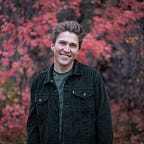Crafting a Podcast
I am a huge fan of podcasts. I love listening to them in the car, while running and especially when washing the dishes. I decided to try to my hand at developing, recording and uploading a podcast of the caliber that I would want to listen to. The finished product.
What am I going to do?
First I needed to figure out what my podcast would be. To get the ball rolling I wrote down a list of all the things that interest me. Then looking at the list I selected ideas that I had not seen or heard in a podcast format. From there it was easy pickings. I ended up deciding on a podcast that talks about customs that were once accepted but are now deemed taboo. I wanted to provide these antiquated customs with context and analyze their impact on our society. I would call it Customs Culture Context. Yay! I had my idea.
How am I going to do it?
Now I had to start looking at some of the nitty gritty details.
- I needed something to record with
- I needed a place to record
- I needed a DAW (Digital Audio Workstation) to record and export the audio
I just so happen to work for a company that has a recording studio and they said I could use it after hours whenever I want. This was a heaven sent. The walls are covered in sound panels to keep everything crisp and tight. They had microphones that I could use and even a small mixer to get our levels just right. For the software I downloaded Audacity (check it out it’s free!) from the internet and watched a couple tutorials on how to use it (it has a very low learning curve). I did some test recordings in the studio and it sounded great now I was ready to record.
Time to record!
I invited my brother to be a co-host on the podcast because I personally enjoy podcasts that have some banter and are strictly information. It was great to have him there and it all went very well. What surprised me was listening back to audio and hearing my speaking idiosyncrasies. Some of it felt natural but some of it was just too painful to hear so I ended up editing all of my audio to make sure that it sounded more streamlined and less bizarre.
Putting it together.
Now I had all the audio and I needed to form it into a full episode with music and an intro and outro. A feature I found very useful when editing in Audacity is “Noise Reduction” which samples the noise of your audio and removes it for you. For the music I reached out to a musician friend and asked if I could use one of his songs for my intro and outro which he agreed to (always check your resources). I then created the cover artwork for my podcast and compiled and exported the rest of the audio. I exported in .AAC which compressed the large .WAV file to miniscule size and it still retained great quality.
Uploading my podcast.
This was the exciting part. I used Anchor to upload my podcast because of its ease of use and the fact it distributes your podcast to various streaming platforms for you which is super nice. This part was easy. I just needed to upload my content and fill out all of my metadata fields.
Sharing my podcast.
It was really fun to make so I might as well share it! I reached out to friends and family on social media and told them about what I made. It was fun to see them engage with it and a lot of them seemed to really like it.
Final thoughts.
Podcasts are an amazing way to share information and experiences. The overhead is really not that expensive or technically difficult. When you are doing creative projects find people around you that are interested in them as well and ask them to participate. You would be surprised at what people can bring to your project.
